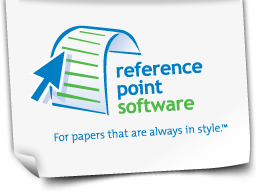How to Integrate Quotes Properly in Your College Papers
When youΓÇÖre assigned a paper, youΓÇÖre required to do objective research about a topic, and then come up with a point of view or argument that is the result of your own critical analysis. The majority of your paper must show your original thinking, meaning you should integrate quotes appropriately, sparingly, and not as a way to hit a word count requirement.
By using quotes, you demonstrate the quality of your research, while adding credibility to your opinions or providing strong contrary points to address. For whatever reason you choose to use them, itΓÇÖs important to know how to integrate quotes properly into your paper to achieve the optimal impact.
Formats of Quotes
There are three primary format variations of quotations that you can use in your paper: direct, block, and summary/paraphrase. A direct (or short) quote uses the exact wording from another source enclosed in quotation marks within the body of a sentence or paragraph. A block (or long) quote is similar to its direct counterpart except that it has a higher word count. Because of its size, the quote is ΓÇ£blockedΓÇ¥ or set off from the rest of the text by including it as an indented paragraph. A summary/paraphrase quotation allows you to restate someone elseΓÇÖs idea in your own words.
Where to Use Quotes
Your introduction, including your thesis statement, and the conclusion of your paper should be your own words. You should only integrate quotes into the body of the paper. In most cases, you will include a quotation as a supporting reference following a statement youΓÇÖve made. You typically wouldnΓÇÖt use a quote to introduce a new idea. Quoted material leaves a favorable impression on your reader rather than seeming like it is simply a repetition of your words, or worse, that your words are simply a repetition of the quote.
Introducing Your Quotes
When including quotes in your paper, you will introduce them by using your own words to give them context. In the cases of direct and block quotes, you will specifically use verbs, such as ΓÇ£addsΓÇ¥, ΓÇ£claimsΓÇ¥, ΓÇ£notesΓÇ¥, ΓÇ£assertsΓÇ¥ or ΓÇ£suggestsΓÇ¥ followed by a comma, colon, or ΓÇ£thatΓÇ¥ preceding the quotes.
For example, if you are assigned a paper discussing the history of art, you could set up a quote as follows:
The language of art history will have to adapt if it is to study other cultures effectively outside Western art traditions. As Andrew Summers states, ΓÇ£Indeed, it has been argued that almost no word in the standard art-historical lexicon is sustainable if a truly global perspective is to be achieved.ΓÇ¥
Choose your verbs wisely. Your selections, whether they are positive, negative, or neutral, will influence your readerΓÇÖs opinion of your statements.
Explaining Your Quotes
If you feel that a quote is valid to include in your paper, you need to discuss it. DonΓÇÖt assume that a quote speaks for itself or that it is a valid substitute for your own words. Since you integrate quotes in support of your points, discuss your interpretation of them and how you see them adding value or credibility to your points.
For example, if you were to follow up the quote above about art, you could use a statement like, ΓÇ£Clearly, then, it is already recognized that changes must be made in order to catalogue and understand art from other cultures.ΓÇ¥
Citing Your Quotes
When you interject quotes in your college paper, you have a requirement to cite your references properly using the style your professor assigns to you, such as the MLA or APA formatting guidelines. These guidelines will alter how you cite quotes in the body of your paper and list them at the end. Whether you need to use the MLA or APA formatting style, there are software products available to save you time editing your paper while ensuring that your citations are formatted properly, so you donΓÇÖt lose marks.
David Plaut is the founder of Reference Point Software (RPS). RPS offers a complete suite of easy-to-use formatting template products featuring MLA and APA style templates, freeing up time to focus on substance while ensuring formatting accuracy. For more information, log onto http://www.referencepointsoftware.com/ or write to:
info @ referencepointsoftware.com
Reference Point Software is not associated with, endorsed by, or affiliated with the American Psychological Association (APA) or with the Modern Language Association (MLA).
